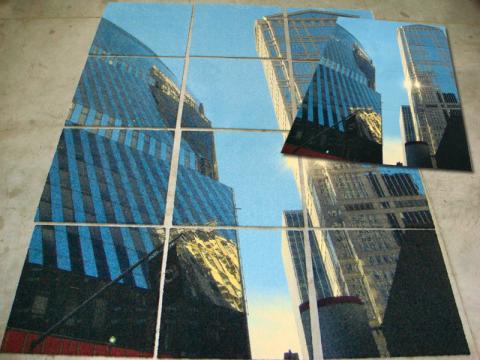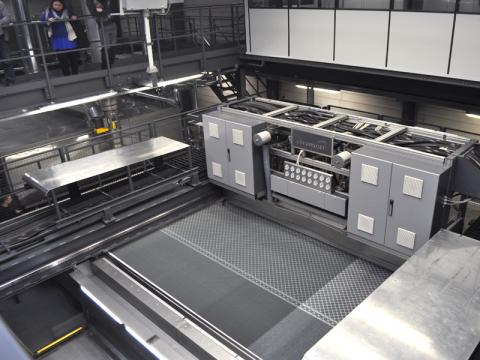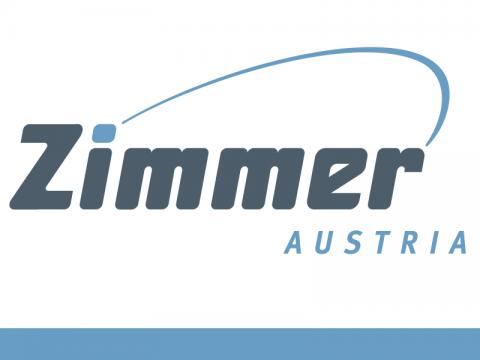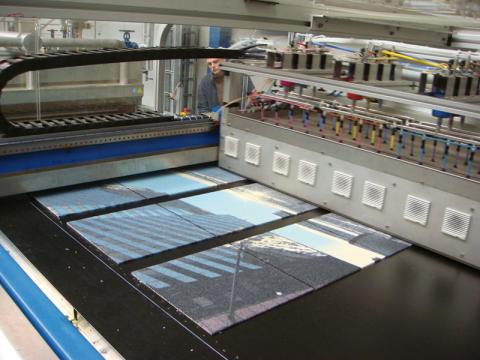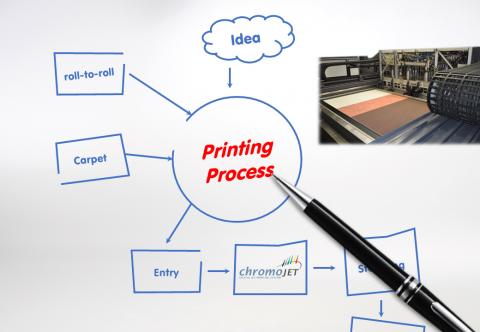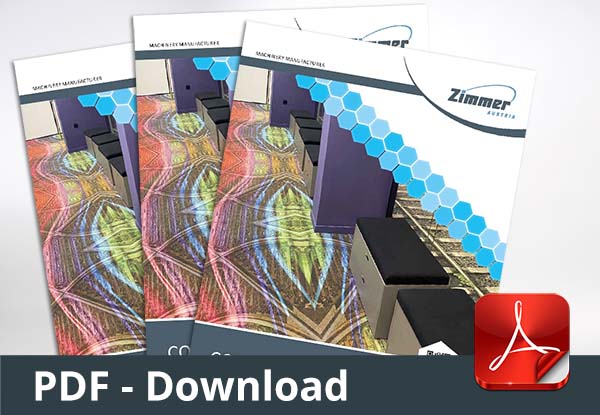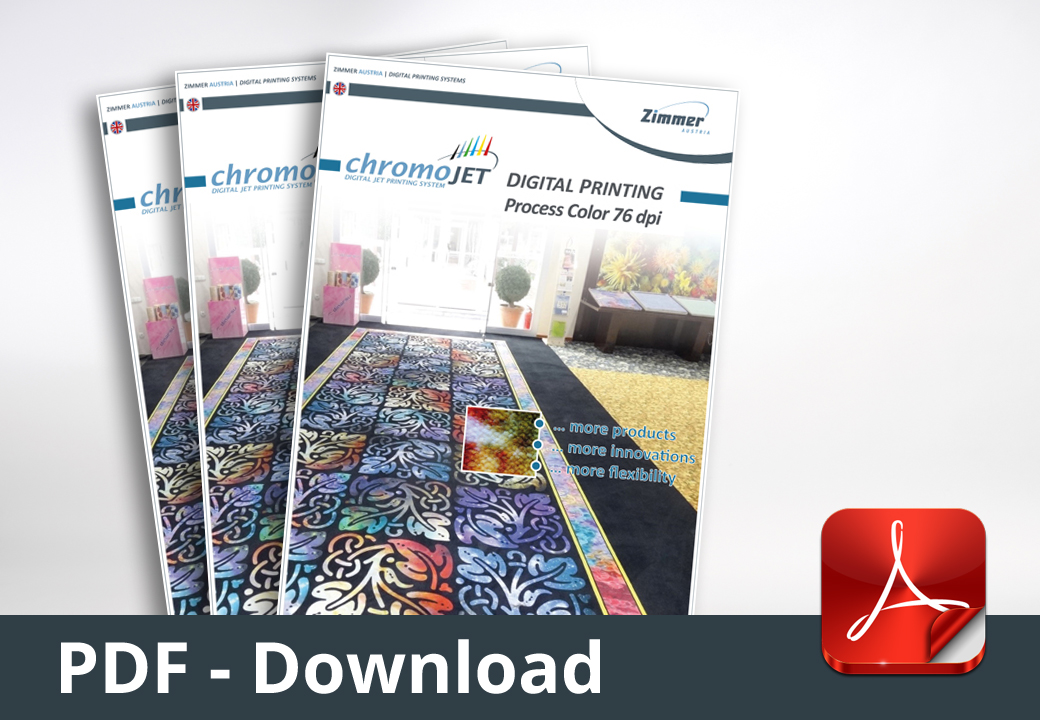Carpet Tiles
Basics
- Carpet tiles are becoming more and more popular. Besides their modularity, carpet tiles also offer a wide range of design possibilities.
- Constructions for printing can vary from tufted low-loop pile constructions up to high-pile twist and cut-pile constructions.
- For contract business, loop-pile constructions out of PA6.6 with about 600 g/m2 pile weight are most popular.
- Prints must have a good light and shampoo fastness, because carpet tiles are mainly used for offices and public buildings.
- A number of printing technologies and processes are available - each one with advantages and disadvantages.
Printing Methods
Printing on roll-to-roll
- In this case, the carpet is tufted on a non-woven Polyester primary backing with about 120 g/m2
- To enhance stability, a pre-coat should be applied
- After the CHROMOJET or COLARIS printing process, the carpet goes to the backing line either in full width or split into 2 m wide rolls
- After the final carpet tile backing, the rolls are cut using either a tie-cutter or a camera-controlled knife cutter with rotating knives (especially used for carpet tiles with a backing out of non-woven Polyester fleece)
- If a camera-controlled cutter is used, it is also possible to print very geometric designs and cut them according to the design
- If a tie-cutter is used, only 'random designs' can be used
Printing on slabs
- In this case, the tufted carpet is printed after its final backing. For easier handling, slabs of about 102 x 102 cm are cut out after the backing process.
- These slabs are positioned onto the CHROMOJET, and normally a set of 4 tiles are printed onto each slab.
- After the printing process, each slab is positioned on a tie cutter, and the tiles are cut exactly according to the print registration.
- This process is more labour-intensive, and the printing line must be adapted to handle these slabs.
Printing individual, pre-cut tiles
Before printing pre-cut tiles, a number of conditions and limitations must be considered:
- In case a higher pile is used, it might be difficult to achieve solid colors on the edges
- Variations of the color shade at the edge of the tile have been experienced, resulting from loose fibers and from uneven density at the edges
- We have also experienced stability problems on certain backings, like bitumen or other thermoplastic compounds
- This method is generally not really recommended
Printing oversized tiles and post-cutting
- In this case the tiles are pre-cut with an oversize of about 1 cm (i.e. 51 x 51 cm; 61 x 61 cm...)
- After the tile is printed, it must be cut a second time in a tie cutter, using a special cutting tool which registers the tile precisely
- This method produces perfect tiles, but it is labour-intensive (putting individual tiles onto the CHROMOJET printer; post-cutting each tile, ...)
Printing Process
Technical Data
Carpet Tile Printing Machines |
||
| CHROMOJET800 | COLARIS | |
| Technology | valve jets with 50 or 76 dpi | inkjet with 400x400 up to 800x3200 dpi |
| Print on roll-to-roll | 2,200 mm wide | 2,200 mm wide |
| Penetration | excellent / full | good |
| Speed | up to 1.5 m/min depending on number of jets per color |
up to 4 m/min depending on printheads per color and print resolution |
| Dye and ink | acid, pre-met; special dyes | acid ink |
| Number of basic colors | 14 process colors + 2 spot colors | 6 up to 12 |
| Recommendation | for pile products from 300 to 1,500 g/m² |
for low to medium pile constructions from 200 to 800 g/m² |
Get more information in our PDF's:
